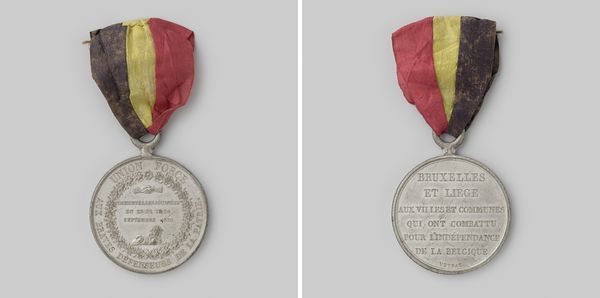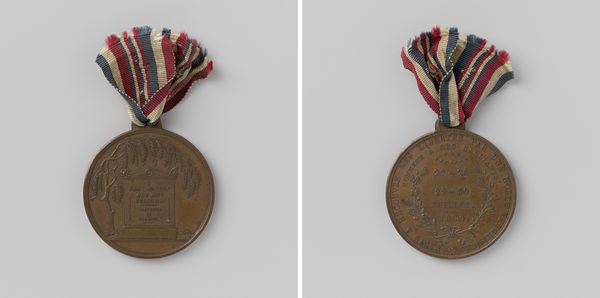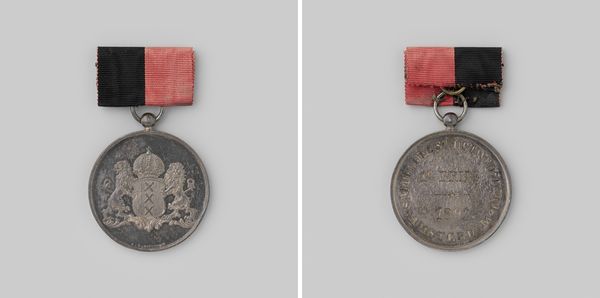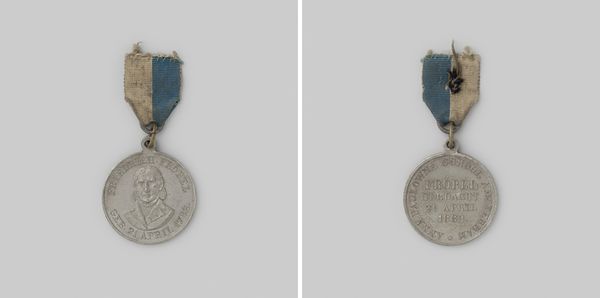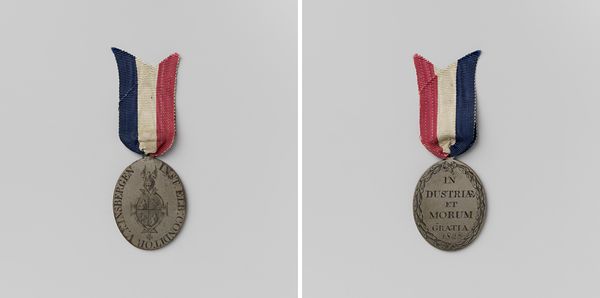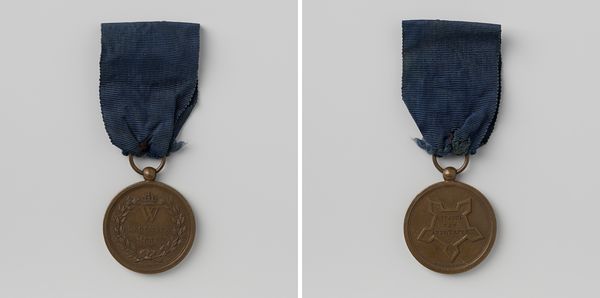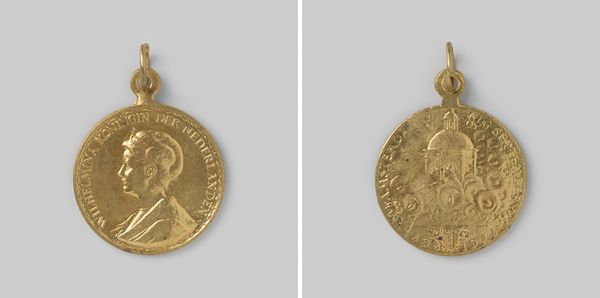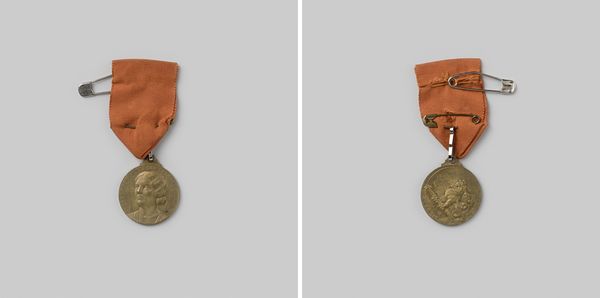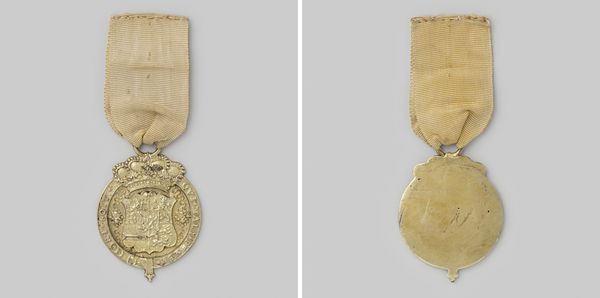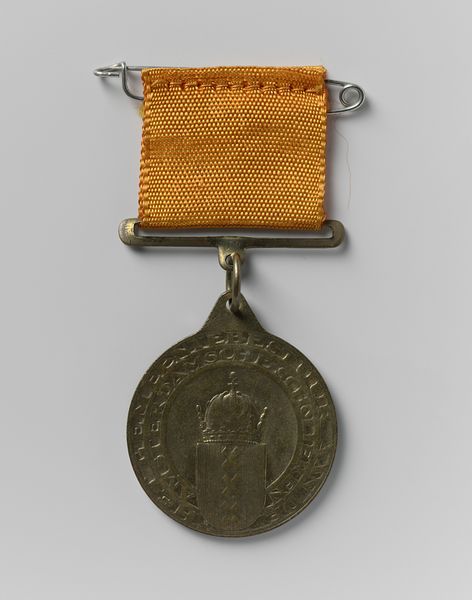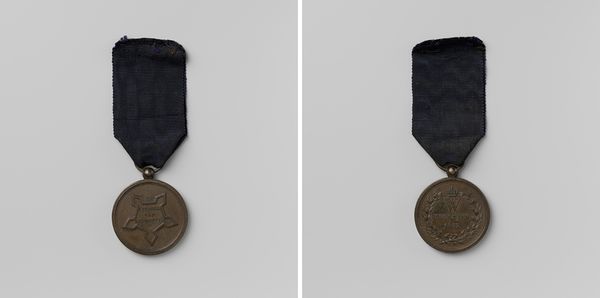
Louis Joseph de Potter, verdediger van de onafhankelijkheid van België 1830
0:00
0:00
anonymous
Rijksmuseum
print, metal, relief, bronze
#
portrait
#
neoclacissism
#
medieval
# print
#
metal
#
relief
#
bronze
#
history-painting
#
decorative-art
Dimensions: diameter 2.9 cm, diameter 2.2 cm, length 2.5 cm, width 3.2 cm, weight 7.46 gr
Copyright: Rijks Museum: Open Domain
Curator: Here we have a bronze medal, dating back to 1830. It’s a relief print commemorating Louis Joseph de Potter, champion of Belgian independence. What strikes you first about it? Editor: Well, it’s the colours. The tricolour ribbon – black, yellow, red – is instantly recognizable as the Belgian flag. It lends an air of defiant nationalism to what would otherwise just be a portrait medal. Curator: Absolutely. And those colours were deliberate choices. Looking at the materiality, bronze as a medium, lends itself well to the multiple reproductions typical for the popular dissemination of revolutionary ideals. We're talking about accessible art meant for the masses, right when Belgium declared independence. Editor: True, but the use of bronze itself also lends a sense of classical virtue to de Potter. Medals like these draw on a long history of portraiture intended to enshrine values in symbolic ways. Notice how de Potter’s image, though small, projects that sense of gravitas? Curator: Yes, it also speaks to that revival of classical artistic elements—Neoclassicism—that you find threaded throughout art and design of this period. It reinforces this almost instant need for a tangible symbol of Belgian independence. Consider where it was made, for whom, how it was worn, it connects so many different spheres! Editor: And it connects the modern revolutionary figure to historical notions of heroism, I think. Consider, this medal visually places de Potter in the same lineage as the heroes and emperors commemorated in ancient Roman coins, subtly elevating his status. Curator: Good point! What's interesting, also, is how time impacts the medal. The material degrades, the colors on the ribbon fade— it adds another layer of material narrative to the piece, as if to say, these were ideals forged in very particular circumstances. Editor: Definitely. Even now, the Belgian flag triggers all kinds of memories and feelings. It acts as a tiny portal to a significant chapter in Belgian history. Curator: I agree. Thinking about the materials, their original purposes, and their gradual changes certainly makes this work quite special to observe. Editor: Seeing the visual symbols associated with historical identity formation helped to contextualize how that little medal packs a big punch in communicating collective ideals and values.
Comments
No comments
Be the first to comment and join the conversation on the ultimate creative platform.

